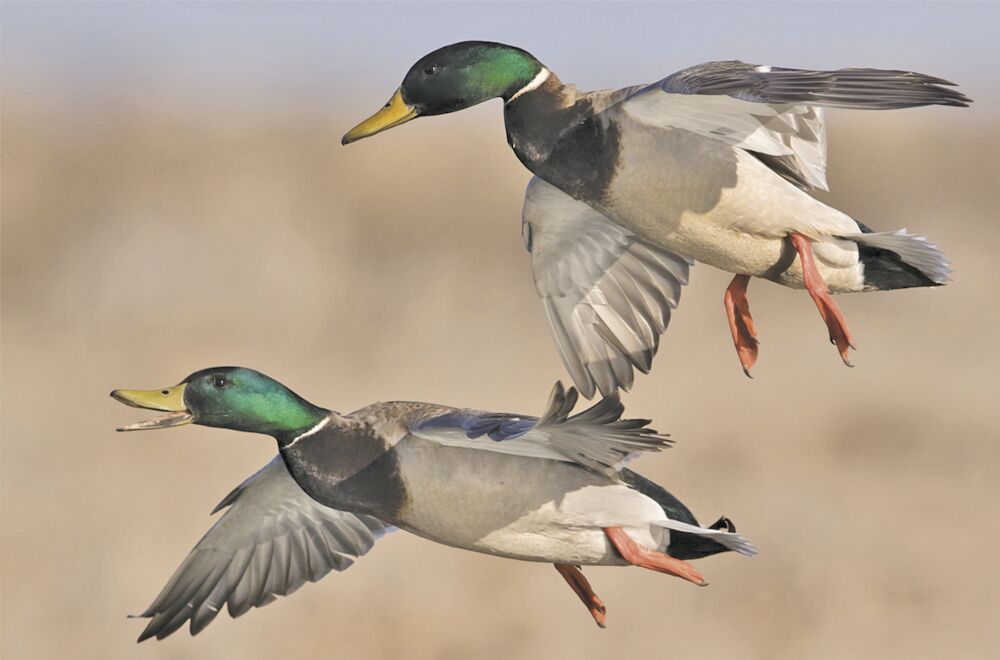Mallard numbers down in 5 states as waterfowlers await U.S F&WS survey
Published 12:00 am Wednesday, August 14, 2024

- Duck hunters who like to see many mallards in each fall flight might be disappointed in 2024-25. Delta Waterfowl reported mallard populations down in five of seven states' breeding grounds this spring and early summer.
While waterfowl hunters around here, across the state and around the country wait for the U.S. Fish and Wildlife Service’s 2024 Waterfowl Breeding Population and Habitat Survey, here’s a hint of what’s to come down the pipe, so to speak.
The U.S. F&WS survey, due to be released later this month, is an annual report that’s considered gospel among duck and goose hunters and managers interested in numbers for different species based on spring breeding surveys. The federal agency already has reported on wetland habitat conditions, mostly favorable, in spring and early summer months.
To help fill the void between now and the survey’s release, Delta Waterfowl Foundation whets the appetite of waterfowlers with its own survey of seven crucial waterfowl production states that conduct their own spring breeding surveys. Delta Waterfowl is a nonprofit, “science-first” organization dedicated to producing ducks and securing the future of waterfowl hunting in North America.
Duck hunters who enjoy putting mallards in the bag during a hunt may be disappointed to find out the species’ numbers decreased, in some instances a lot, in five of the seven states surveyed –Wisconsin; Minnesota; North Dakota; Washington, and California. (EDITOR’S NOTE: Mississippi Flyway states include Michigan, Minnesota, Wisconsin and North Dakota. A Flyway is the path migratory birds take each fall when they fly south for the winter. The other Flyways ae Atlantic, Central and Pacific.)
Michigan’s mallard population was estimated at 250,581, 22-percent below the long-term average but 12-percent higher than the most recent 10-year average, according to Barbara Avers with the Michigan Department of Natural Resources. Michigan’s state biologists pointed out the survey was taken one week earlier than normal and noted some ducks that didn’t settle in the state to breed likely were counted.
In Oregon, where mallards normally rank No. 1 in the state’s survey, the species was at 71,047, a 4-percent increase but 20-percent below the LTA, according to Brandon Reishus, Oregon Department of Fish and Wildlife.
Otherwise, mallard numbers dropped significantly in the other states.
Wisconsin’s mallard population was pegged at 146,561, an 8-percent decrease from 2023 as well as 18-percent below long-term, reported Taylor Finger with the Wisconsin Department of Natural Resources.
As for Minnesota, Bruce Davis with the Minnesota Department of Natural Resources estimated 140,941 mallards, a 38-percent decrease from 2023 and 38-percent below the LTA.
North Dakota’s estimated mallard population was 19-percent lower than 2023, based on a survey by the North Dakota Game and Fish Department’s Mike Syzmanski.
In Washington, mallard accounted for more than half the ducks surveyed, according to Kyle Spragens with the Washington Department of Fish and Wildlife. Spragens reported an estimated 86,360 breeding mallards reflected a 15-percent decrease from 2023, 6-percent below the LTA.
Northern California’s breeding duck survey counted 177,828 mallards, 12-percent down from 2023 and 44-percent lower than the long-term average. Also, according to Melanie Weaver with the California Department of Fish and Wildlife, mallards were at a survey record low in the Sacramento Valley.
There were positive reports from those seven states contacted by Delta Waterfowl.
For example, Canada geese numbers were 29-percent higher than 2023 and 21-percent above the LTA at an estimated 281,445 in Michigan, where the state’s management goal for Canada geese is 175,000-225,000.
Also, Wisconsin’s wood duck numbers were at 96,711, less than 1-percent lower than 2023 but still 13-percent above the long-term since the state started surveys back in 1973.
And more blue-winged teal than last year were counted in Minnesota, where numbers jumped 26-percent to 159,514. However, the population was 23-percent below the LTA.
Washington’s gadwall count rose 45-percent to 20,845 and redheads increased by 153-percent to 7,801.
Shovelers dominated the duck count in Oregon. The spring survey counted 80,864 shovelers, approximately triple their historic average in the state. Also, the abundance of shovelers pushed the state’s total duck estimate to 303,446, a 53-percent increase over 2023 and 14-percent higher than the long-term average.
California’s bright spot shined on the cinnamon teal. The count came in at 46,097, a 38-percent increase over 2023 that puts them 9-percent above the LTA.





